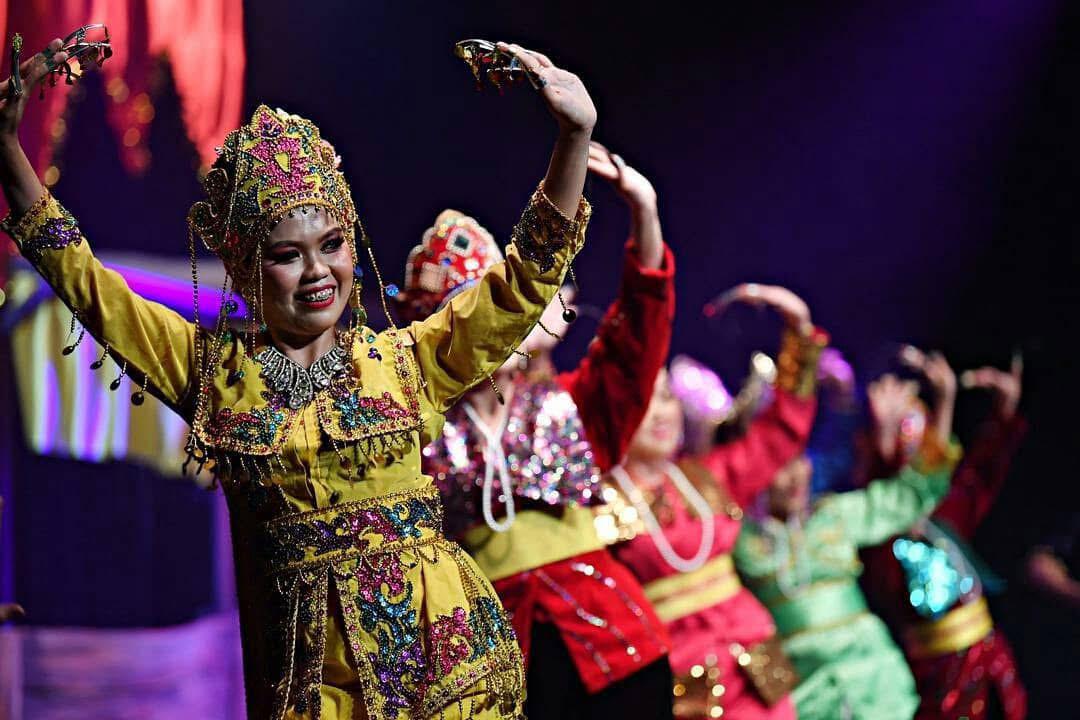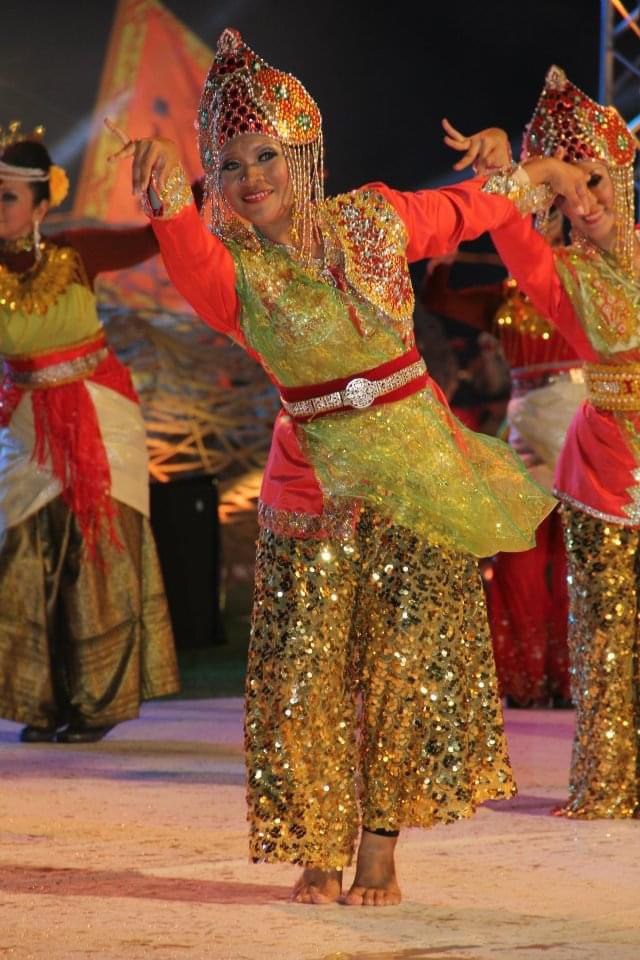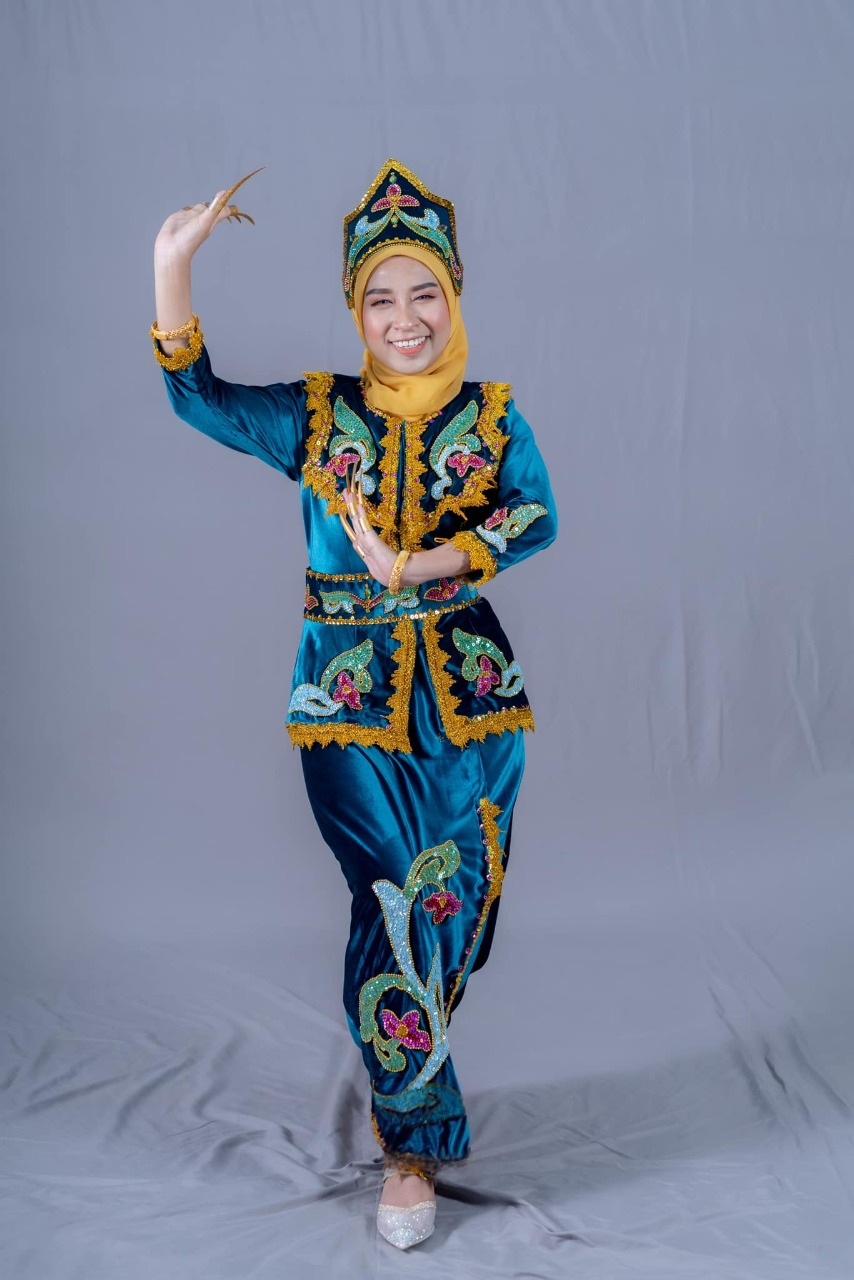ARTS AND CULTURE INFORMATION GATEWAY
Immerse yourself in the colorful world of art and culture! From traditional heritage to contemporary works, discover uniqueness that reflects the nation's identity and identity
IGAL-IGAL
Picture
5
Video
No record
Today's Visitor
91
Number of Visitors
236
Introduction and history
Igal-Igal is one of Sabah's most popular traditional dances, especially among the Bajau Laut community in the eastern coastal areas, particularly in Semporna. The root word “Igal” means “dance,” and this terminology is often associated with words that refer to the 'act' of dancing, such as:
Table
1: Terminology of the Root Word “Igal”
|
No. |
Term |
Description |
|
1)
|
Angigal / Ngigal |
Means ‘to dance’
– directed towards one person. Example: “Bai
na ka angigal?” Translation:
“Have you danced?” |
|
2)
|
Magigal |
Means ‘to dance’
– directed towards more than one person. Example: “Bai
na kam Magigal?” Translation:
“Have you all danced?” |
|
3)
|
Igalan |
Means ‘dance’ –
refers to one or more individuals. Example: “Lanuknah
igalan nuh” (to an individual). Translation: “Your dance is beautiful.” Example: “Lanuknah
igalan bih” (to a group). Translation: “Your dances are beautiful.” |
Igal-Igal holds great significance as a celebratory dance, serving as entertainment during weddings, engagements, cultural festivals (such as the Regatta Lepa Festival), welcoming ceremonies, and official events. This dance not only enlivens the atmosphere but also highlights the unique cultural identity of the Bajau community to the audience.
Typically, this dance is performed in traditional attire of the Bajau Laut community, showcasing its unique charm. The costumes are renowned for their vibrant velvet fabric, adorned with intricate beadwork or sequins, reflecting the distinct identity of the culture.
The female dancers' attire is known as "Badju Ala Bimbang." A distinctive feature of this blouse lies in the layered beadwork decoration sewn from the shoulders down to the chest. This outfit is typically paired with a long skirt or loose trousers resembling a skirt, known as "Sawwal Kinantiyu." The ensemble is further enhanced with a traditional belt called "Kambot," made from stiff fabric embroidered with sequined beadwork.
The dancers’ head accessories include "Gandik" or "Mahkuta," complemented by floral ornaments tucked into their hair bun. Finally, the look is completed with hand accessories called "Janggay," which are long, claw-like nails made of gold- or silver-colored brass.
The male dancers’ attire is known as “Badju Tangguh” or sometimes referred to as “Badju Leyang.” This outfit features a high-collared neckline (Cekak Musang style) and a front opening that reveals an inner layer worn by the male dancer. It is paired with slim-fitting trousers called “Sawwal Tanjak.” The ensemble is complemented by a waist wrap known as “Kandit.”
For head accessories, the traditional attire includes a headdress called Tanjak, which comes in two types. If the headdress is made from stiff fabric and tied at the back, it is called “Tingkat Tanjak.” If it is made from softer fabric and tied around the forehead, it is known as “Porong.”
Igal-Igal secara tradisi diringi dengan set ensembel alat muzik yang dikenali sebagai “Tagungguk”. Ensembel ini terdiri daripada alat muzik Agung (Gong), Kulintangan dan Tambul (gendang). Lazimnya, irama yang dimainkan ketika mengiringi persembahan Igal-Igal dinamakan rentak “Titik Tabawan” .
The Igal-Igal dance
can be performed individually, as a duo, or in a group. In paired performances,
it typically involves interaction between a male and a female dancer. The male
dancer emphasizes movements that reflect strength and masculinity, while the
female dancer showcases graceful and gentle movements. In group performances,
it usually involves four (4) to eight (8) pairs of dancers.
Traditionally,
Igal-Igal is highly flexible, as the movements are improvised based on the
rhythm produced by the Tagungguk ensemble. This improvisation allows dancers to
adapt their movements to match the ambiance of the performance. In paired
performances, the male and female dancers complement each other’s movements,
creating harmony between masculine energy and feminine grace.
The anatomy of the
dance focuses on three (3) main elements: hand, shoulder, and foot movements.
These three elements are interconnected, creating the unique aesthetics and
character of Igal-Igal performances. Below is an explanation of the basic
movements that form the structure of this traditional dance.
Table 1:
Anatomy of Movements in Igal-Igal Performances
|
Body Movement |
Name &
Description of Movements |
|
Hands |
Hand movements are the most essential element in Igal,
showcasing intricate patterns unique to each dancer. There are four (4) basic
hand movements in Igal: 1) Angaleburan Tangan One hand is slightly bent towards
the body, while the other is extended high to the side. The wrist rotates in
a circular motion (either inward or outward). 2) Amalantik Tangan ingers are bent as far back as
possible while moving them gracefully. The more pronounced the curve of a
female dancer's fingers, the more elegant the dance appears. Male dancers
also move their fingers but without emphasizing the curve. 3) Holigai’un Tangan This refers to opposing palm
movements, as though pushing against a load using the palms. 4) Angalimbayan Tangan Both hands are extended outward,
waving slowly from a low to a high side position, with slightly curved fingers
that accentuate the movement when reaching the high position. This movement
is often paired with footwork at the beginning of the performance. |
|
Bahu |
Shoulder movements, known as “Angidjut Baha” or “Kidjutan,”
play an important role in enhancing the visual beauty of the dance. Shoulders
are moved alternately forward and backward, in rhythm with the music.
Although not considered critical, this movement adds aesthetic value to the
dance, referred to as “Amalanu’ Igal,” meaning beautifying the dance. |
|
Kaki |
Foot
movements in Igal-Igal involve two (2) primary motifs: 1) Pagginsil Tapek/Naek A gliding motion of the feet using
the heels and the front part of the foot. If both heels glide to the right,
both feet will turn to the left. A slight jerk accompanies each glide to
facilitate smooth movement. 2) Angengkek-Ngengkek A basic movement where one leg bends
to support the body, while the other foot touches the floor with the toes or
the ball of the foot, close to the supporting leg. This versatile movement
enables dancers to move forward, backward, or sideways. |
Mr. Azlan bin Marasal, Kampung Bugaya, Jalan SMK Bugaya, 91308 Semporna, Sabah.
Mr. Datu Sabri bin Datu Alawiddin, Kampung Pinggiran Bakau, Jalan Kampung Perigi 91308 Semporna, Sabah.
Mr. Mohd Noh bin Abdul Karim, Kampung Bohey Lima, 91308 Semporna, Sabah.
Mrs. Marliza binti Marasal, Kampung Bugaya, Jalan SMK Bugaya, 91308 Semporna, Sabah.
Ms. Salasiah binti Abd Rani, Kampung Tampi-Tampi, 91308 Semporna, Sabah
Reference Source
Amsalie, Y., Pisali, A., Zainal, S., Jusilin, H., & Lauk, M. (2017). Persembahan tarian panangsang dalam ritual penyembuhan masyarakat bajau laut. Jurnal Gendang Alam (GA), 7.
Hafzan Zannie, Hamza (2013) Igal:The traditional performing arts of the bajau laut in Semporna, Sabah / Hafzan Zannie Hamza. Masters thesis, University of Malaya.
Santamaria, M. C. M. (2023). Three Categories of Intangible Cultural Heritage and Three Degrees of Importance: The Case of the Sama-Bajau Igal Dance Tradition of Tawi-Tawi Province, Philippines. In Performing Arts Conference: Heritage and Modernity in the Performing Arts (p. 1).
Zainal, S., Rahman, M. K. A., Lazarus, E. M. C. L., Salleh, M. S., Amsalie, Y., Pisali, A., ... & bin Musa, M. N. H. (2021). Kelamat-Keombo’an: Permainan Watak Melalui Penyatuan Elemen Kelima Dalam Persembahan Teater Ritual Igal Etnik Bajau Pantai Timur Sabah: Kelamat-Keombo’an: Role Play Through The Fifth Elemets Unification In Igal Theatre-Ritual Performance Of Sabah East Coast Bajau. Jurnal Gendang Alam (GA), 11(2), 63-84.
Location
State JKKN Contact Information
Encik Hassanal Redzuan
Cultural Officer
Jabatan Kebudayaan dan Kesenian Negara, Sabah
Kompleks JKKN Sabah,
Jalan Tasik off KM4 Jalan Penampang,
88200 Kota Kinabalu
SABAH
088-205070

 Kampung Pinggiran Bakau, Jalan Kampung Perigi 91308 Semporna, Sabah
Kampung Pinggiran Bakau, Jalan Kampung Perigi 91308 Semporna, Sabah









